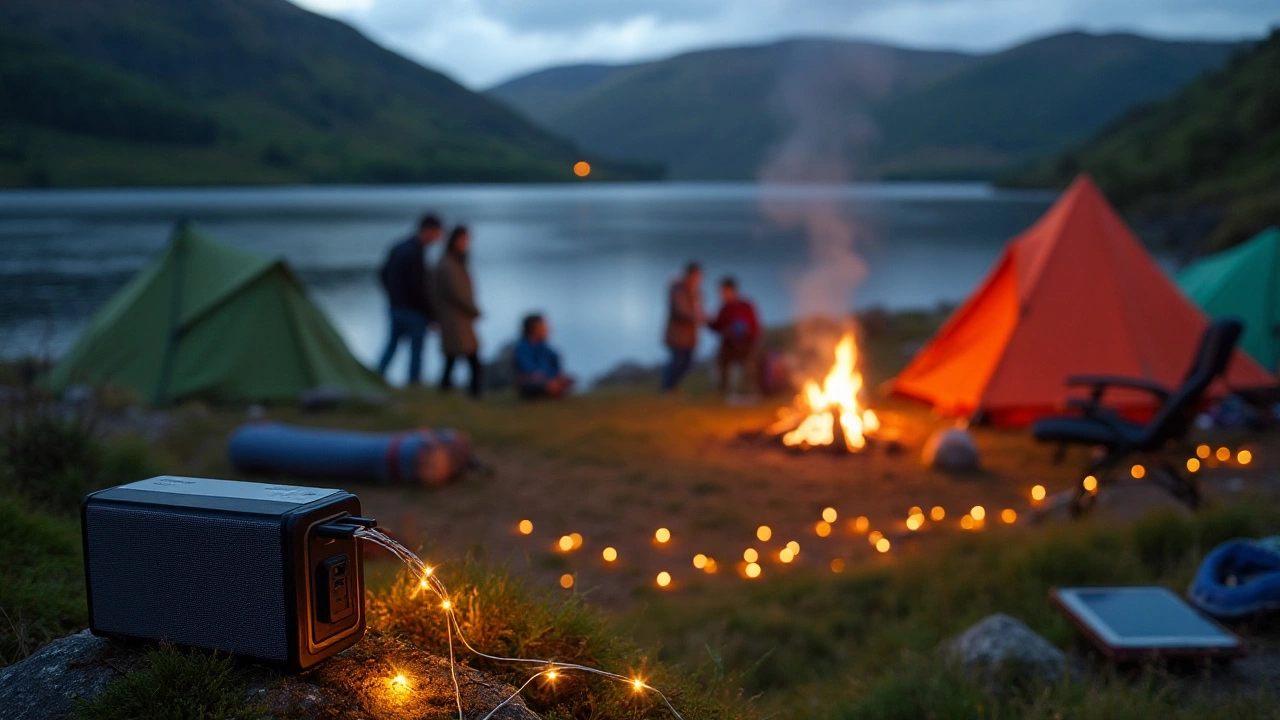Portable Power Station Basics for Motorhome Travelers
If you’ve ever tried to charge a phone, run a mini‑fridge, or power a TV while on the road, you know how frustrating a dead battery can be. A portable power station (PPS) is essentially a big, rechargeable battery with AC and DC outlets that you can plug into your motorhome’s 12 V system or a campsite socket. It gives you backup power when the engine’s off, during blackouts, or at sites without electricity.
Choosing the Right Size and Features
First, figure out how much power you need. List the devices you’ll run most often – a phone charger (5 W), a laptop (60 W), a portable fridge (80 W), maybe a small TV (120 W). Add up the wattage and look for a PPS with a continuous output a bit higher than that total. A 300‑400 Wh unit covers basic gadgets and a fridge, while 1000 Wh models can handle a TV and lights for several hours.
Next, check the outlet mix. Most units have at least one 110‑120 V AC socket, a 12 V car plug, USB‑A and USB‑C ports, and sometimes a 12 V DC barrel. If you need to run a CPAP machine or power tools, make sure the PPS has a pure‑sine wave AC outlet – it protects sensitive electronics.
How to Hook Up a Portable Power Station Safely
Connecting a PPS is easy. When you’re at home, charge it from a wall outlet or a dedicated 240 V charger. On the road, you can plug it into the motorhome’s 12 V socket (cigarette lighter) or a shore power hook‑up. Never run the PPS directly from a very high‑amp engine alternator without a proper charge controller – it could overheat.
Keep the unit in a ventilated spot and avoid covering it. Portable power stations generate heat, especially when delivering high power. If you notice it getting hot, give it a break or reduce the load. Also, never mix the PPS with your vehicle’s battery without a splitter cable; the two systems have different charging profiles.
To stretch runtime, use energy‑saving habits: run fans instead of AC, turn off lights when you leave the cabin, and keep the fridge door closed. Pairing a PPS with a solar panel can recharge it during daylight, giving you near‑continuous power on long trips.When you park at a campsite with electricity, you might not need the PPS at all. However, keeping it charged acts as a safety net if the site’s power fails or you decide to camp off‑grid for a night.
Finally, maintain your PPS by storing it at about 50 % charge if you won’t use it for months. Extreme heat or cold shortens battery life, so keep it in a temperature‑controlled area when possible.
With the right portable power station, you’ll never have to sacrifice a night of Netflix or a cold drink because the RV’s battery died. Choose a capacity that fits your lifestyle, hook it up properly, and enjoy the freedom of power wherever the road leads.
Choosing the Best Portable Power Station for Your Camping Adventures
Exploring whether a portable power station is a worthwhile investment for camping enthusiasts seeking electric hook-ups. This article dives into the convenience and benefits of portable power solutions, provides insights into functionality and longevity, and offers tips for selecting the right unit for your outdoor adventures. Whether camping in remote locations or frequented campsites, proper access to electricity can enhance your outdoor experience. Discover key considerations and the potential return on investment that portable power stations offer.
